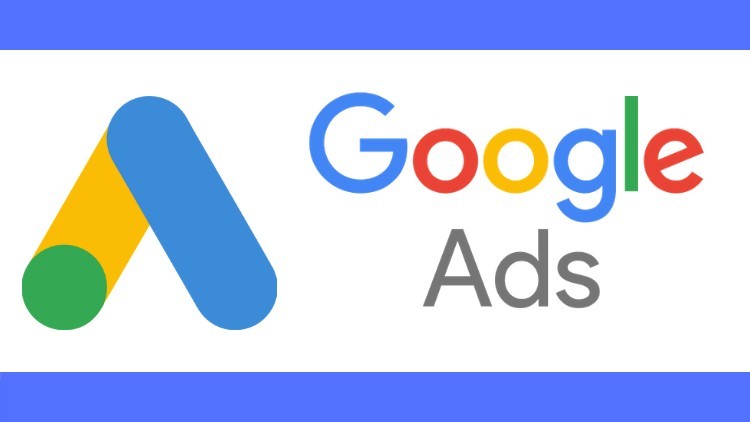Table of Contents
ToggleUnveiling the Potential of Google Ads & PPC Marketing
Introduction
In the dynamic realm of digital marketing, Google Ads stands tall as a beacon of opportunity for businesses aiming to expand their online presence and drive revenue. With Pay-Per-Click (PPC) advertising at its core, Google Ads offers a robust platform for targeted advertising, allowing businesses to connect with potential customers at the precise moment they are searching for relevant products or services. In this extensive guide, we will navigate through the intricacies of Google Ads, exploring its features, strategies, and step-by-step implementation to empower you in mastering the art of PPC marketing.

Understanding Google Ads & PPC
Google Ads, formerly known as Google AdWords, is an advertising platform developed by Google, enabling businesses to display advertisements across various Google-owned platforms, including search results, partner websites, YouTube, and more. Through a bidding system, advertisers compete for ad placement by targeting specific keywords, demographics, interests, and other criteria relevant to their target audience.
Setting Up Your Google Ads Account:
Begin your Google Ads journey by creating an account on the platform. Navigate to the Google Ads website and sign in using your Google account credentials. Follow the prompts to set up your first campaign, selecting your campaign objective based on your business goals, whether it’s driving website traffic, increasing brand awareness, or boosting sales and conversions.
Conducting Comprehensive Keyword Research
Keyword research forms the cornerstone of any successful PPC campaign. Start by identifying relevant keywords and phrases that align with your products, services, and target audience. Utilize tools such as Google Keyword Planner, Ubersuggest, Semrush, or Ahrefs to uncover high-volume keywords with low competition. Focus on long-tail keywords that are specific to your niche to capture highly targeted traffic.
Crafting Compelling Ad Copy
The effectiveness of your ads hinges on the quality of your ad copy. Craft compelling and concise copy that resonates with your target audience and entices them to click. Highlight unique selling points, promotions, or special offers to differentiate your ads from competitors. Incorporate relevant keywords seamlessly into your ad copy to improve ad relevance and visibility.
Utilizing Advanced Targeting Options:
Google Ads offers a plethora of targeting options to ensure your ads reach the right audience. Narrow down your targeting parameters based on demographics, location, device type, interests, and even remarketing lists. Experiment with different targeting combinations to refine your audience targeting and maximize the efficiency of your campaigns.
Strategic Bid Management:
Effective bid management is paramount for optimizing the performance of your Google Ads campaigns. Choose a bidding strategy that aligns with your campaign objectives and budget constraints. Options include manual CPC bidding, automated bidding strategies such as Target CPA or Target ROAS, or enhanced CPC to maximize conversions while staying within your budget.
Leveraging Ad Extensions for Enhanced Visibility:
Ad extensions provide additional information and opportunities for engagement within your ads. Experiment with various ad extensions such as sitelinks, callouts, structured snippets, and location extensions to enhance the visibility and relevance of your ads. Utilize extensions strategically to provide users with more reasons to click and increase your ad’s real estate on the search results page.
Continuous Monitoring and Optimization:
Successful PPC campaigns require ongoing monitoring and optimization to achieve optimal results. Regularly review key performance metrics such as click-through rate (CTR), conversion rate, and cost per conversion. Identify underperforming ads, keywords, or targeting settings and make data-driven adjustments to improve campaign performance and ROI.
Embracing A/B Testing:
A/B testing, also known as split testing, allows you to compare different ad variations to determine which performs best. Test different ad creatives, headlines, call-to-action phrases, and landing page designs to identify winning combinations. Analyze the results of your tests and implement changes based on insights gained to continuously refine and improve your campaigns.
Implementing Conversion Tracking:
Conversion tracking is essential for measuring the effectiveness of your Google Ads campaigns and attributing conversions to specific ads or keywords. Set up conversion tracking within your Google Ads account using conversion tracking tags or integrate with Google Analytics for advanced tracking capabilities. Monitor conversion performance and adjust your campaigns accordingly to maximize ROI.
Embracing Continuous Learning and Adaptation:
The landscape of digital marketing is ever-evolving, with new trends, technologies, and consumer behaviors shaping the industry. Stay informed about industry developments, algorithm updates, and emerging advertising strategies. Continuously seek opportunities for learning and experimentation to stay ahead of the curve and adapt your PPC strategies to evolving market dynamics.
Conclusion:
Mastering Google Ads and PPC marketing requires a blend of strategic planning, creative execution, and ongoing optimization. By following the comprehensive guide outlined above and staying proactive in monitoring and adapting your campaigns, you can unlock the full potential of Google Ads to drive targeted traffic, generate leads, and achieve your business objectives in the digital arena. Start your journey towards PPC success today and pave the way for sustained growth and profitability in the competitive landscape of online advertising.